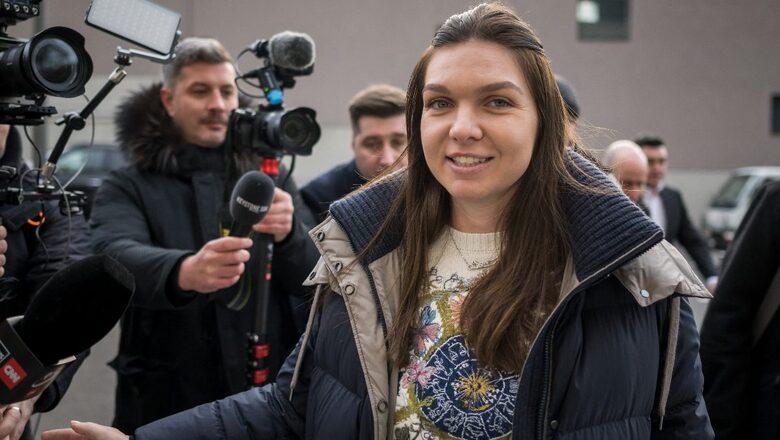
views
Former world number one Simona Halep appeared before the Court of Arbitration for Sport on Wednesday to appeal her four-year doping ban in what is expected to be a three-day hearing.
The 32-year-old Romanian was suspended last September by the International Tennis Integrity Agency (ITIA) after two separate doping infractions.
The two-time Grand Slam singles champion tested positive for roxadustat after the US Open in 2022 and was charged with a separate second anti-doping breach last year relating to irregularities in her athlete biological passport.
Halep, smiling and surrounded by her legal team, was seen entering CAS headquarters at the Palais Beaulieu in Lausanne, Switzerland but made no statement.
The CAS ruling will be delivered at a date yet to be announced.
Halep has protested her innocence and refused to accept the ITIA decision which will keep her from playing professional tennis again until October 6, 2026.
The winner of the 2018 French Open and 2019 Wimbledon singles titles says she wants to “clear her name” and has claimed experts found she had accidentally taken a contaminated supplement.
But the ITIA said while the tribunal accepted Halep had taken a contaminated supplement, they also “determined the volume the player ingested could not have resulted in the concentration of roxadustat found in the positive sample”.
Roxadustat is a substance that can be used legitimately to treat anaemia.
But it is also on the World Anti-Doping Agency banned list as it is considered a blood-doping agent, which increases haemoglobin and the production of red blood cells.
The biological passport system is designed for the long-term monitoring of an athlete’s blood indicators with the aim of identifying irregularities that could indicate doping.

















Comments
0 comment